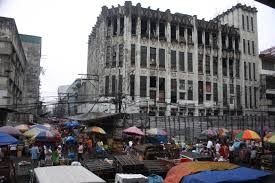


Known to be the Pearl of the Orient, Manila in these modern days tries to glitter with many skyscrapers forming part of a skyline. It is even equated with many landmarks and other tourist spots that depict its own history. Long before Manila became the center of economy, politics, society and education in the Philippines, it was bounded with a rich record that residents should know.
The meaning of the name
Before it was officiated to call the place Manila, the very first name was coined from two Filipino words: May which means there is and nilad pointing to a name of shrubs that grows along the shores of the Manila Bay.Maynilad has been shortened after few generations until it was called Maynila and later named Manila.
The pre-Spanish rule
Prior to the arrival of the Spaniards, Manila was a village settled by the Muslims. It was ruled by a leader whom they call Rajah. Two rajahs, Soliman and Matanda, controlled the village. In the northern side of the Pasig River was also a village once ruled by Rajah Lakandula.
The Spanish era
The rich environment of Manila became an attraction for the Spaniards to invade the area. A fifth expedition led by Miguel Lopez de Legazpi, the captain were the first westerners to set their feet in the capital. They defeated the Muslim forces and declared the place as capital of the archipelago in 1595. Chinese settlers also arrived in Manila in the 1590s and became merchandisers for trade. They were aware of the social and economic advantages enjoyed by the Roman Catholics so they decided to get married to Filipinas and created a town for them. They played a very important role during these times.
In the 1600s, a group of Catholic priests- the Jesuits established the first educational institutions in the country which is served a seminary for the nobles. They also established the first Catholic churches such as the St. Agustin church at the heart of Intramuros Manila.
The 1700s
The construction of Intramuros was built and revealed a progress in structures, roads and trades. It also improved better when the Suez canal was opened. Manila was under the British rule for 2years but gave the city back to Spain after a peace treaty was declared from the Seven Years war.
The 19th century
The time when the Nationalist sentiments of Filipinos has risen and it erupted after three priests charged with mutiny were executed by the Spaniards. It also was the highlight of the Filipino Patriot Jose Rizal. Manila in this period became the breeding ground for Philippine revolution. Battle of the Manila bay happened as well as the leadership and formation of Andres Bonifacio’s Katipunan secret society near Manila.
The battle of Manila bay gave independence to the Filipinos but the American forces occupied the city and imposed a new form of government. The Philippine Commission passed a new charter for the city of Manila.



